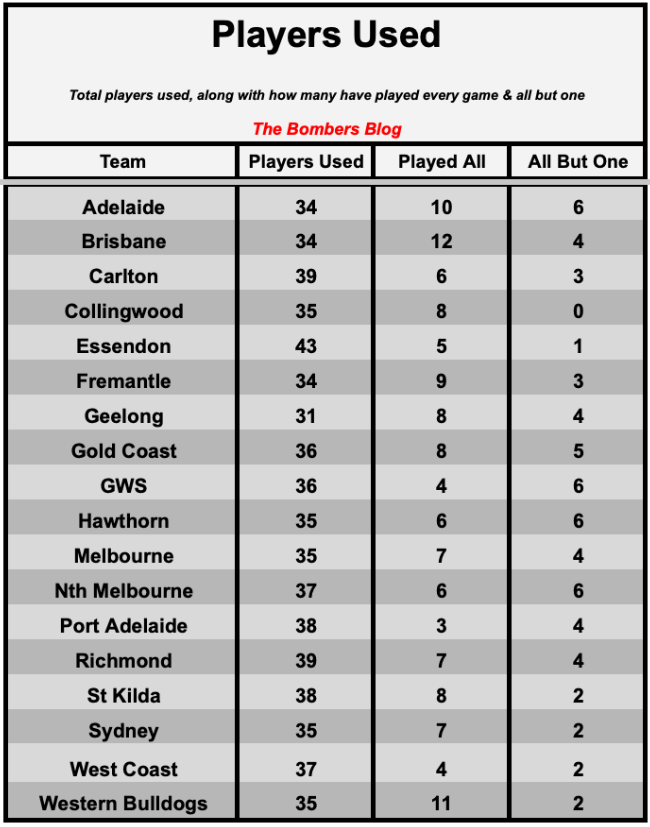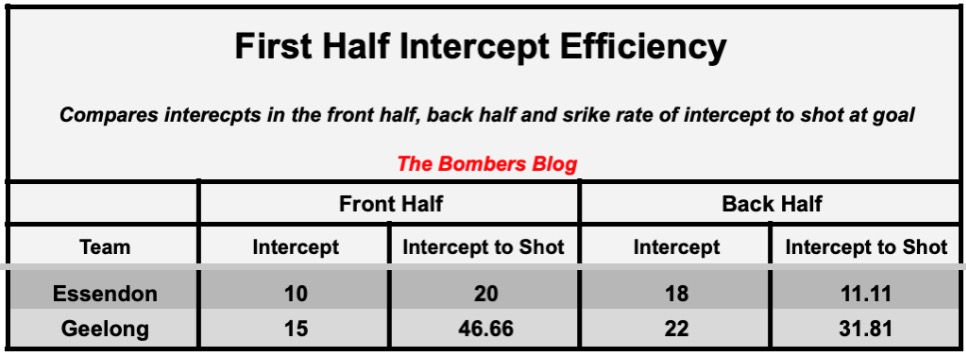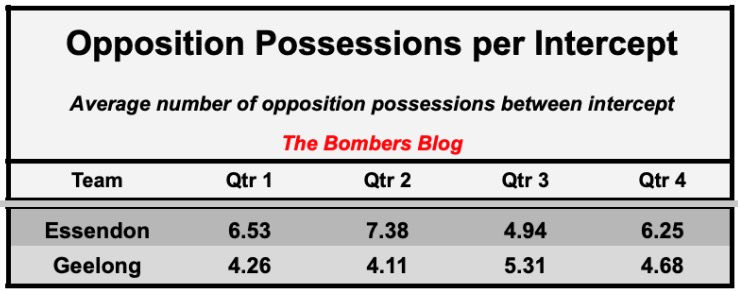
Cats vs Bombers Review
- thebombersblog

- Aug 10
- 7 min read
The mood, before and after.
Most, if not all, Essendon supporters had serious concerns this week, travelling down the highway to face a Geelong side that knows every blade of grass on its home turf and can punish the scoreboard like few others in the game’s history. With the Bombers missing so many players through injury across all lines, there was definitely a sense of dread before the bounce.
But driving home from a 44-point loss and a 10th straight defeat somehow didn’t feel as harsh as many expected. What a season this has turned out to be.
Contrasting futures.
The difference between where these two teams currently stand, and where they’ve been in recent years, has been clear and obvious. A mixture of talent, system, and that intangible — culture built on consistency of performance over nearly 20 years — was on full display once again.
Efficiency and effectiveness in the two main aspects of the game were evident, highlighting the gap between the two sides.
One team has done the majority of the learning and is now putting it into best practice as the season heads into the pointy end, while the other is still in the process of figuring out what it needs to become.
Stability.
This season, Essendon has used 43 different players over their 20 games, the most of any team, with only six players having played at least 19 of those games, and five featuring every week. In stark contrast, Geelong have used the fewest, just 31, with 12 of them appearing in 21 of their 22 games.

In this week’s lineup, the Bombers featured five players in their first season of football, with another in his first season of senior football. Of these six, four have only been at the club since mid-season, less than two and a half months ago.
It’s this continuity, or rather the loss of it, that allowed one team to make the most of their opportunities with the ball in hand, while the other inadvertently created chances for their opponents when it was their turn. The first half shows this contrast best.
The first half.

In the last five games, no side has been more efficient at turning an intercept into a scoring shot than Geelong, and if you gift them the ball on top of what they already win at clearance, you’re in trouble.
By half time, 37 of Geelong’s 55 possession chains had started from intercept, with 19 of those won in the air, underlining how effective their set up is behind the ball. From there, they made it count, finding 13 marks inside their forward third, 30% above the league average, and generating a shot at goal from 72% of those entries, the highest rate Essendon has conceded in any half this season.
Outside of centre bounce, Geelong managed just one point from stoppage in the opening two quarters, but 14 of their 17 shots came directly from Essendon turnovers, split evenly between back and front half. They converted 33.8% of their intercepts into shots, over 19% better than the AFL average.

Essendon had their share of possession, and while they couldn’t match Geelong’s consistency in moving the ball from the back half, when they did transition cleanly into even-numbered contests inside 50, they found a marking target over 27% of the time, including three occasions within 30 degrees of goal.
The issue was when they couldn’t find that connection with a forward and, as has been the case for a few seasons, it came through either poor decision-making or execution, which fed
directly into Geelong’s turnover scoring.
The third quarter.
The 20-minute half-time break only heightened the apprehension I’d written about earlier. Essendon had managed just two shots at goal in the second term, trailed by 37 points, and had Liam McMahon, the mid-season recruit, as their sole goal kicker. While the margin wasn’t yet out of control, and was perhaps even a surprise to some watching, the ease with which Geelong found scoring options in their forward half compared to Essendon inevitably fuelled that unease.
Thankfully, the young and inexperienced Bombers came out of the break with an understanding of the main issues from the first half, and went straight to work on correcting as many as possible.
In the first 40 minutes, Essendon could only intercept Geelong once every 6.95 possessions, a rate that would rank last over the course of the season. It was never going to disrupt enough of what a team like Geelong wanted to do, nor create enough chances for Essendon to hit the scoreboard consistently.
In the previous quarter, the Cats averaged 4.17 disposals per possession chain, allowing them to regain lost territory from clearances (Essendon won centre bounce 3-1 after losing it 4-0 in the first term) or switch their line of attack to keep the Bombers’ defence on its edge, enabling them to find 29 uncontested marks in their back two-thirds of the ground. This time, however, Geelong wasn’t afforded the same luxuries, as Essendon improved their centre bounce work and set up far more effectively without the ball.
Centre clearances went 6-3 in Essendon’s favour, and the front-half press that was a feature in 2024 but largely absent for most of 2025 re-emerged, pinning Geelong deep in their defensive half.
Essendon’s intercept game improved to one every 4.84 possessions, a rate that, if sustained over the course of the season, would rank second-best, behind only Adelaide, the league’s number one defensive team. As a result, Geelong’s disposals per chain dropped to 2.96, but the real value, however, lay in Essendon’s ability to efficiently convert those intercepts into shots, and even better, maximum scores, which they managed to do.
With Geelong’s ease of ball movement largely halted, their usually effective structure behind the ball found itself disorganised in relocating their matchups. From this, Essendon was able not only to find marking targets just under 30% of the time, but also to apply pressure at ground level amid the chaos.

A high in a season full of lows.
Essendon’s 32 points for the quarter was their equal third highest scoring quarter of the year, behind only the six-goal (39-point) final term against Adelaide in round two, and the six-goal (37-point) first quarter versus North Melbourne in round eight.
Five of Essendon’s seven shots at goal in the quarter came from Geelong turnovers, resulting in four goals, three of which stemmed from front-half chains.
The Bombers’ 17 inside 50s during this period was their second-highest in a quarter this year, behind only their third quarter against Port Adelaide way back in round 3.
While it was only a small win in the scheme of things, in a season marked by ongoing challenges and disappointments, it was encouraging to see genuine rewards for the players on field, something that could drive confidence and provide a foundation to build on as the season winds down.

This weeks KPI’s
In my preview, I set out some achievable goals I wanted to see this week, with one of the two main focuses on Essendon being harder to play against by denying uncontested marks in transition.
Quote taken from preview.
“In all of Geelong’s wins this year, they’ve averaged 97.85 or more uncontested marks per game, clearly a preferred method in their ball movement. In their losses, however, that number drops to just 71.16 as opponents have managed to restrict their unpressured game.”
Unfortunately, this doesn’t align well with Essendon’s profile. The Bombers have allowed just under 98 uncontested marks per game this season…
Setting a target of 20 per quarter may be ambitious, but it’s only five fewer per term, and the Cats average the seventh-fewest disposals of any team this year.”
I’ve commented on this part of the game far too often this year, but its impact on how things have played out on ground has been significant.
After Geelong was allowed to take 133 uncontested marks in round 14, restricting them had to become a clear focus on the whiteboard and in the weekly planning.
With the narrower dimensions of GMHBA Stadium and improved clearance work, it was pleasing to see a major improvement compared to that last meeting, and even a slight lift on the season average, despite Essendon falling short of my target.
In the first half, Essendon allowed 51 uncontested marks to Geelong, with 48 of those coming in the back two-thirds of the ground, which only made things easier for the Cats when they had the ball. But, as mentioned earlier, things changed not only in the third quarter but also in the last, as Essendon restricted Geelong to just 35 uncontested marks in that time, 26 of which were part of ball movement forward.
This forced Geelong into either a handball game (which they embraced) or longer, more direct kicks to contests (which they were also willing to play). At least this meant the game shifted into testing their ability to win the ball more often while also providing valuable insights into Essendon’s players for the future.

Groundball.
The second main assignment was to test a vulnerability in Geelong’s game this year at ground level, though, to be fair, it’s only really been exposed against stronger opposition.
Quote taken from preview.
“In their six losses, the Cats have lost the groundball differential three times and broken even once. Only two teams have won groundball and still lost to Geelong, one of those was Essendon in Round 14.
“If the Bombers can restrict the Cats’ uncontested marking, even by a small margin, it will help pull the game more into contest, giving them a chance to test their ability to consistently win the hardball and looseball battles…”
Winning the hardball pre-clearance hasn’t been a strength for either Geelong or Essendon this season. The Cats sit 8th in the league, just above even in this metric, while the Bombers rank 14th and fell short by four in this area when the two teams met in round 14. This week, however, Essendon rose to the challenge and held sway by 11 at game’s end.
But hardball is only one part of the groundball game, and it’s in the loose ball contests on the outside that Geelong dominated, winning this important aspect by 15. This was clear in their ability, once the ball got outside, to run, spread, and link up by hand, helped by Essendon not having its first, or let’s be honest, second set of rotations in the midfield.

Conclusion.
While it may not be fully reflected on the scoreboard or the win-loss column, Essendon’s second halves in the past two games have shown promising signs, especially given they came against two teams boasting more mature lineups with greater experience and confidence in systems honed over many preseasons.
If Essendon can build on this improvement and sustain it for longer periods, they will put some pressure on some weaker teams over the next two weeks and build the confidence needed to hopefully finish the year on a more positive note than previously seemed possible.






Comments